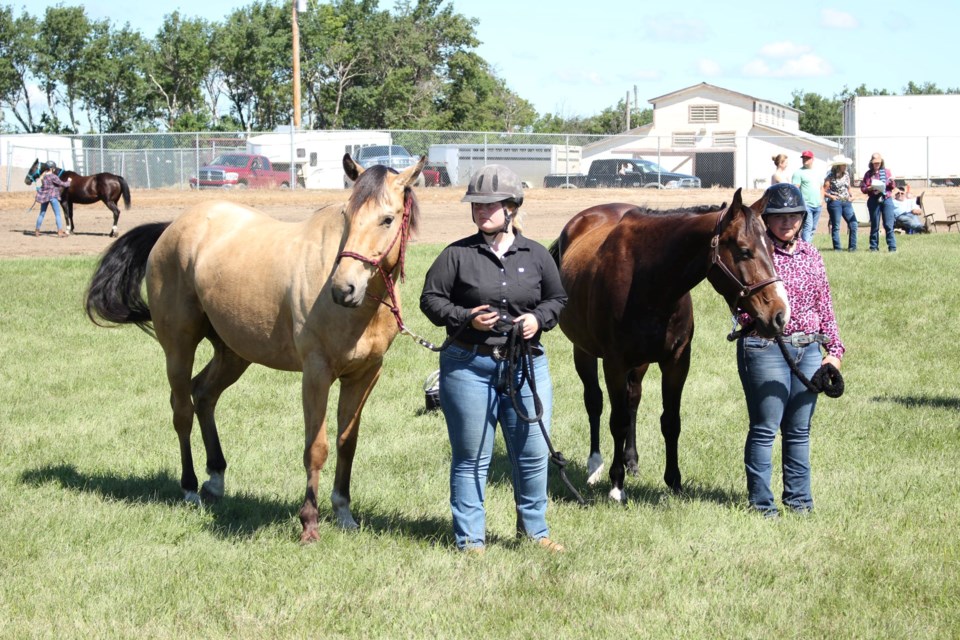The light horse ring at the Yorkton summer fair was a classroom of sorts for Natasha Quigley.
Quigley was shadowing show judge Tammy Hayward as part of a process to become a carded judge through the Saskatchewan Horse Federation (SHF). She said going through the process just made sense given her background.
“I’ve judged 4-H and small shows and been a coach,” explained Quigley who hails from Gravelbourg. “I’ve been involved in the horse industry since I was three, so it was the next step.”
Quigley has shown horses for years, typically Arab stock, and generally in the western riding classes, although she added she hopes one day to become active in events where she and her horse are working with cattle.
Judging puts her on the other side of things, and the 40-year-old said the training provides a good foundation. She explained the SHF set up the training program as a way to foster greater consistency among judges, and as a way to ensure a thorough knowledge of class rules.
“You do some classroom work,” she said, adding there are tests associated with that element of the program.
And then there is what essentially is an apprenticeship of sorts where those taking the course must shadow at least four different judges over a period of time. Tammy Hayward of Kendal, SK., who did the Yorkton show is the third judge Quigley has shadowed.
Quigley said it is good to get a varied perspective as every judge does things just a little bit differently.
“Every judge is very different,” she said, adding “the way Tammy scores halter classes is very different from the judge I worked with last.”
The differences provide an opportunity to develop an approach based on different aspects from those shadowed.
“It’s picking out whatever’s going to work best for you,” said Quigley.
Quigley said the overall program puts new judges on a more or less equal footing.
“It’s creating a little more consistency within judging,” she said.
Quigley said the final step is being accepted by the SHF.
“By the ends of summer I’ll have my qualification in,” she said, adding those are reviewed before the final carding is approved. Once approved education doesn’t stop as a course is required every three years to keep carded judges up-to-date on rule changes.




